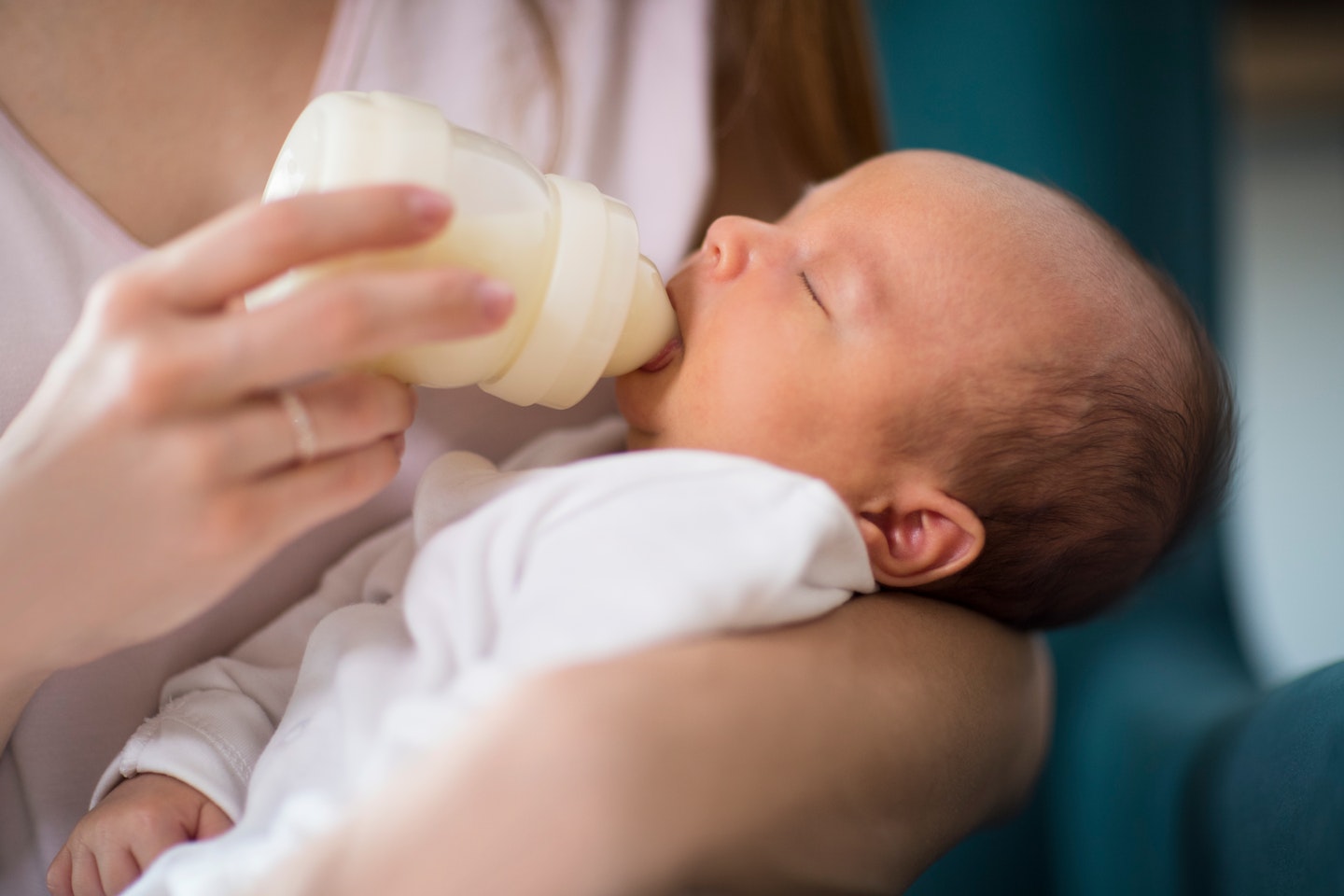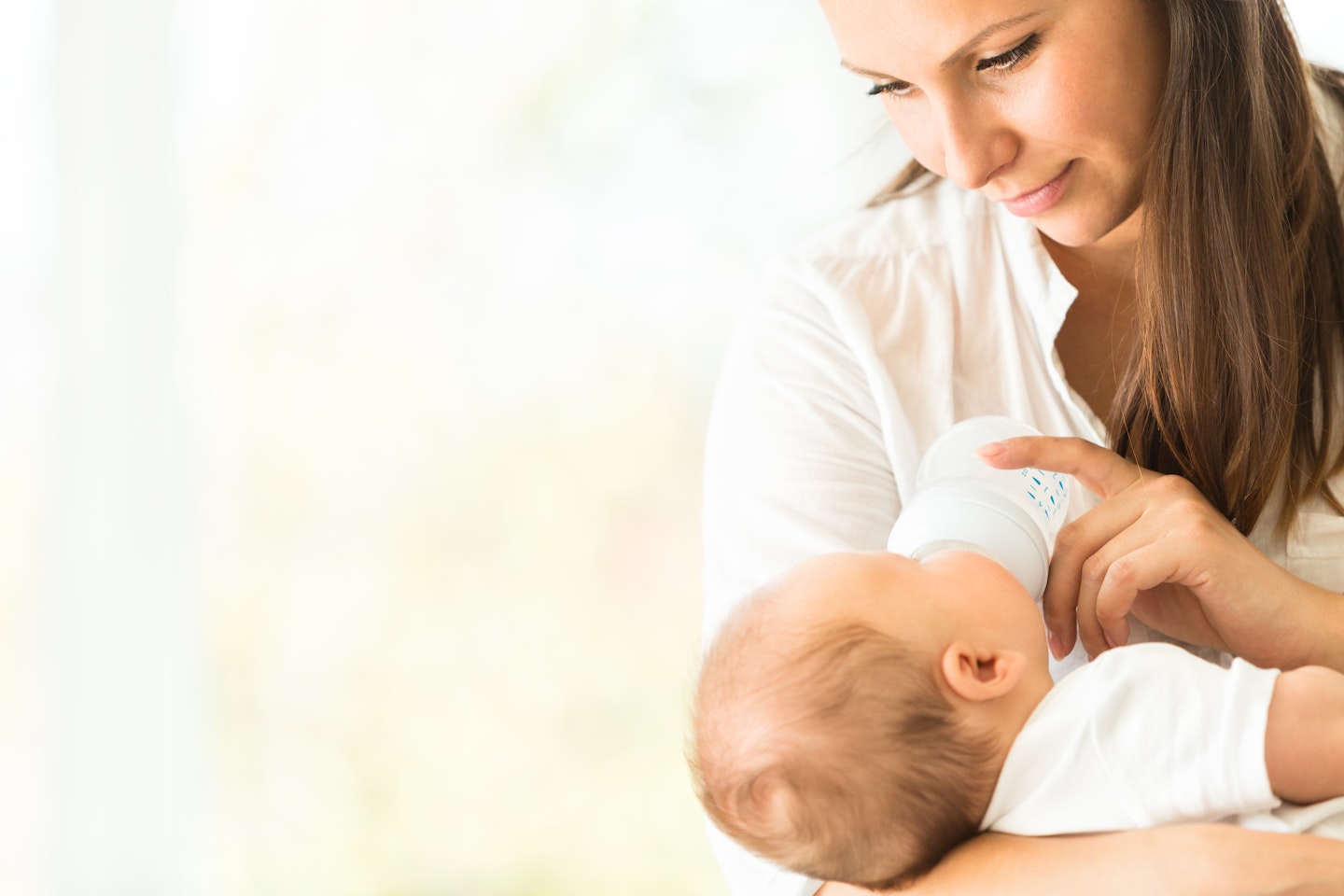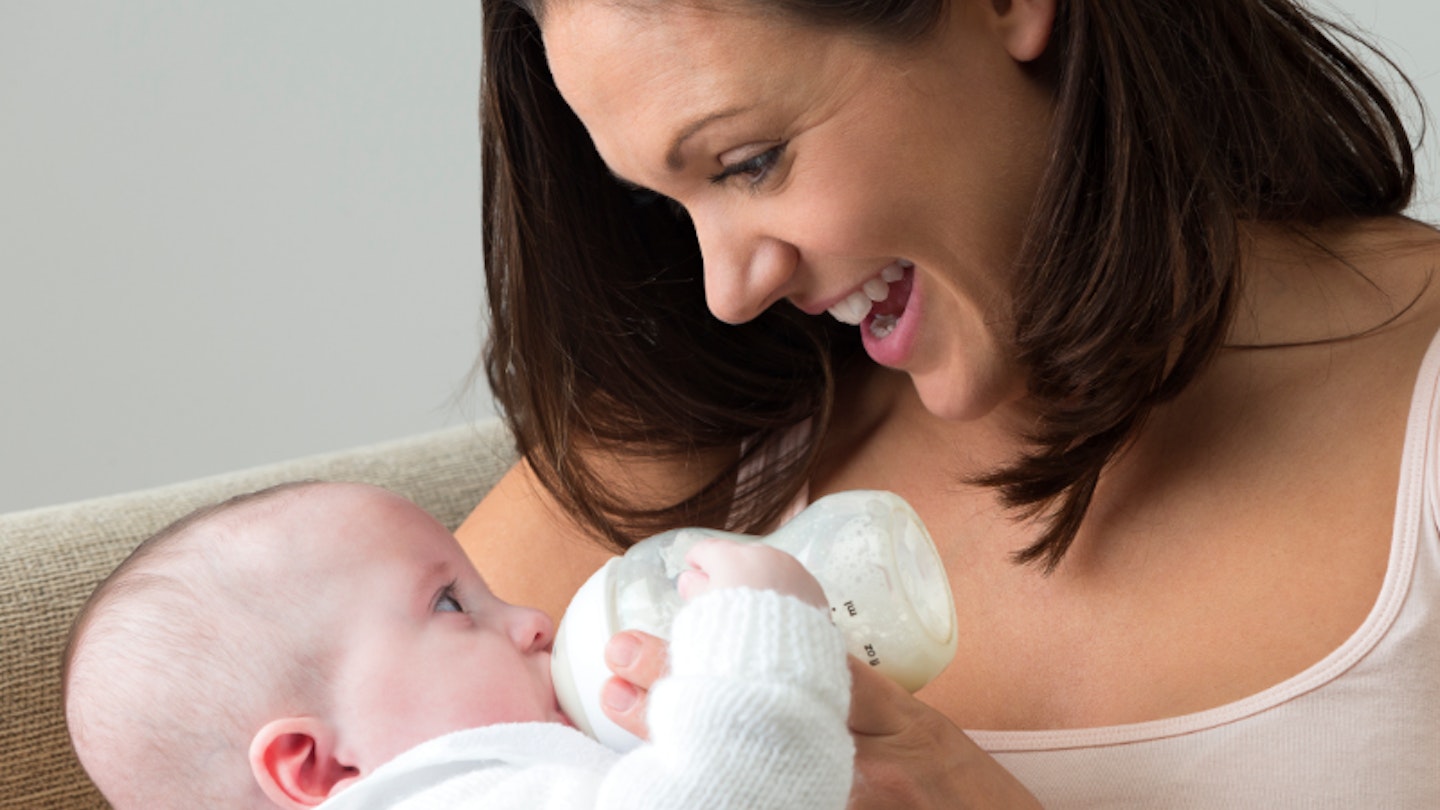Whether you’re formula-feeding, breastfeeding or maybe doing a bit of both, at some point you’ll switch to using a bottle to feed your baby.
If you’ve never bottlefed your baby before it can feel quite daunting as you’ll be keen to get it right, but we’re here to reassure you it’s really not rocket science and you have nothing to worry about. Whether you’re bottle feeding with expressed milk or formula, here’s everything you need to know about how to bottle feed your baby, to ensure they’re happy and healthy.
How to bottle feed a baby

Bottle feeding can be a beautiful experience, as it’s a chance to really bond with your baby.
Once you've figured out how your breast pump works, make sure you’re sat somewhere comfortable, that you’re relaxed and hold your baby close to you. Hold your baby in a semi-upright position, as this will ensure that they can breathe and swallow comfortably and avoid choking. Holding the bottle, brush it’s teat against your baby’s mouth and when they open it and stick out their tongue, draw it in and you can begin feeding. If they're struggling to latch onto the teat, they could be suffering with tongue tie so it's a good idea to speak to your GP.
Here’s some things to always remember when bottle feeding your baby:
• Never leave them alone - don’t ever be tempted to leave your baby alone in a room with a propped up bottle, as they could choke.
• Keep the bottle horizontal - keep your baby’s bottle in a horizontal position, just slightly tipped. This helps the milk to flow out of the bottle steadily. If the teat gets blocked, replace it with a newly sterilised one and if it goes flat, just gently pull on the side of your baby’s mouth to release the suction.
• Let your baby guide you - follow your baby’s lead. Every baby will want a different amount of milk and some will want feeding more than others. Don’t panic if your baby doesn’t finish a bottle either, they’ll have as much to satisfy their hunger.
• Get rid of unused milk - if your baby doesn’t finish their feed, whether it’s breastmilk or formula, throw it away, don’t keep it. Only make up feeds as and when they’re needed, one feed at a time.
• Winding your baby - sometimes your baby will need to burp during their feed. To do this, hold them upright, while gently patting or rubbing their back to help bring up the wind.
How to prepare your baby’s bottle feed
As your baby’s immune system is still developing, the NHS says you need to keep your baby’s feeding kit super-clean by sterilising everything (bottles and teats) for the first year.
Read more: How to sterilise your baby’s bottles and feeding equipment
How to prepare your baby’s bottle feed
Wash bottles thoroughly in hot soapy water, scrubbing with a bottle brush, then check the rims and teats. Rinse to remove detergent, then sterilise.
Sterilisers work either chemically – where the kit is soaked in water and a sterilising solution – or by heat, usually via steam or by boiling water. Make sure you always wash your hands too before sterilising.
Bottle buying know-how
There’s no magic formula to finding a bottle your baby likes – it’s a case of trial and error. Some babies will take to a particular shape, while others need features that ease wind or colic.
Check the teat, too – some are made to resemble the natural feel and shape of your breast, which could make the transition easier. ‘Teats come in slow, medium or fast flow. You want your baby to get the milk quickly and easily, so medium is good to start with,’ says Clare Byam-Cook, author of What To Expect When You’re Breastfeeding… And What If You Can’t?.
‘It should take him 20 minutes to finish a feed – if it’s longer, try a faster flow. Or, if he’s gulping milk down, test a slow one.’
Read more: A guide to choosing the best baby bottles for your little one
FAQs about bottle feeding

My baby is sometimes sick after bottle feeds, is this normal?
Yes, it is completely normal for your baby to bring up a little sick after or during their feed. This is known as ‘reflux’. Just keep a muslim cloth on standby and check the teat of your baby’s bottle isn’t too big, as drinking milk to quickly can cause your baby to be sick.
The NHS advises if it happens a lot, your baby is violently sick or seems to be in pain, to contact your GP or talk to your health visitor.
I’m struggling to get my baby to switch from breast to bottle, what can I do?
‘Don’t feed him for at least four hours before you give a bottle, so you know he’s hungry,’ says Clare. ‘And keep the teat in his mouth even if he cries – if you take it out, he’ll never learn there’s tasty milk in it. As many babies are soothed by movement, try walking around while the teat is in his mouth.’
This can be stressful for some women, so it’s best to choose a day when someone can help you, but be the one to feed him. He’ll feel more secure with you.
My baby isn’t settling after his feeds, why and what can I do?
Sometimes if your baby has swallowed air while feeding, it can cause them to feel uncomfortable and cry. To avoid this, hold your baby upright, either against your shoulder or propped forward on your lap. Gently rub their back, as this will encourage any trapped air to find its way out.
Popular articles to read next
Mother&Baby's Best Bottle Feeding Product Award Winners 2019
